Start - Aktualności - Treasure Week – the mysterious world of minerals, fossils and meteorites
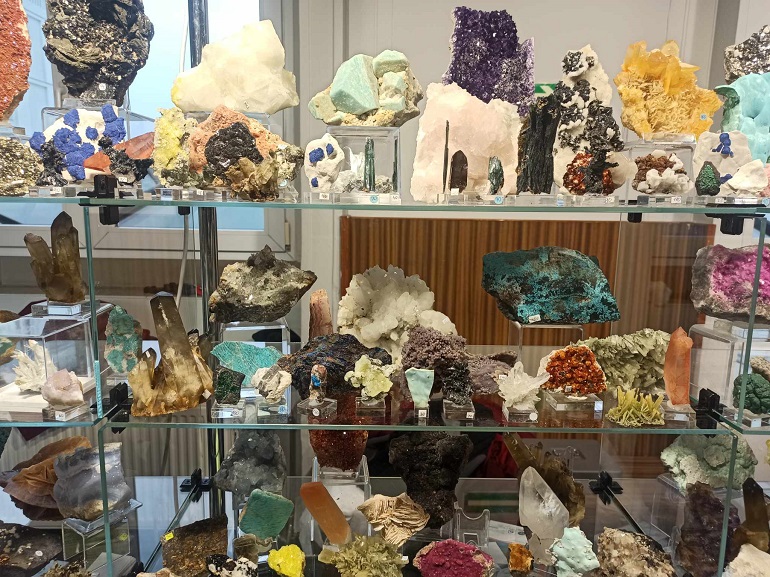
Treasure Week - the mysterious world of minerals, fossils and meteorites
Treasure Week is behind us, the second of the science weeks organized as part of the celebrations of the European City of Science Katowice 2024. On this occasion, the Silesian University of Technology has prepared a number of attractions for everyone, regardless of age, from preschoolers to seniors. There were workshops, shows and lectures. The event ended with the Exchange of minerals, rocks and fossils.
Treasure Week took place from January 8 to 14 in Gliwice, Katowice and Sosnowiec. The curators of the event were: M.Sc. Eng. Ewa Głuszek and prof. Małgorzata Labus from the Silesian University of Technology. – People associated with the Faculty of Mining, Safety Engineering and Industrial Automation of the Silesian University of Technology were involved in the organization of the Treasure Week. Therefore, when creating the program, we focused on the treasures of the earth - fossils, precious stones, metal ores used in modern technologies, up to space objects from which perhaps in the near future we will exploit the raw materials we need. We also wanted to show how important the help of surveyors is, who, based on the latest technologies, are able to prepare maps that allow you to discover the treasures of the Earth and beyond - said M.Sc. Ewa Głuszek.
Scientists from the Faculty of Natural Sciences of the University of Silesia, the University of Economics and the Medical University of Silesia also joined the Treasure Week celebrations.
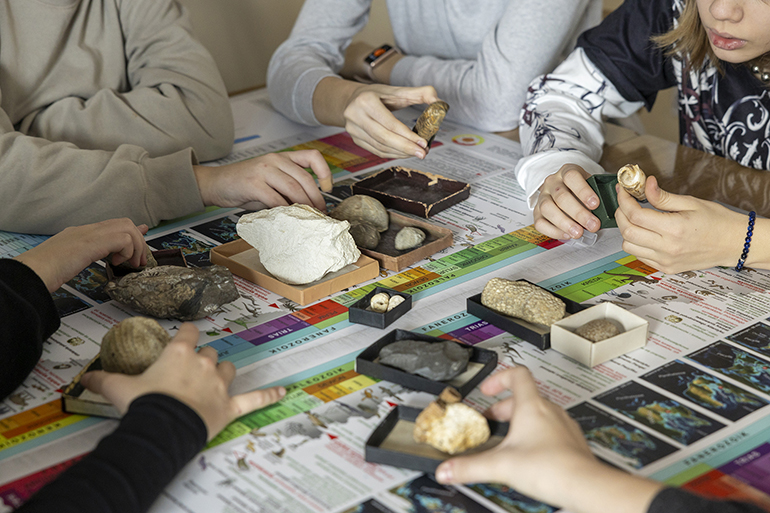
During the week, everyone, regardless of age, could find something for themselves. On the first day, students took part in a demonstration lesson at the Museum of Earth Sciences of the University of Silesia in Sosnowiec. The classes were conducted by geologist dr Zuzanna Wawrzyniak. - We talked about what happened in the world during past geological eras, how to study the age of the earth, and finally we looked at the fossils that remained on Earth - said dr Wawrzyniak.
The remaining activities on the first day of Treasure Week took place in Katowice. In Kato Science Corner, dr Dawid Surmik from the Faculty of Natural Sciences of the University of Silesia talked about the work of a palaeontologist.
- Some people associate him with Ross from the TV series Friends, others with dinosaurs, and I would like to talk to the meeting participants about these associations. This is certainly a good opportunity to interest those who are somewhat interested in palaeontology, but do not know all the possible applications of this scientific discipline, said dr Surmik.
In addition to geological knowledge, Treasure Week participants could participate in workshops on future competences at Rawa Ink in Katowice on Monday. Dr hab. Małgorzata Dobrowolska, prof. SUT conducted leadership skills training, focusing on the presentation of the so-called soft skills of the future. During the training, there was a lot of discussion about the consequences of technological progress for humans and futuristic visions regarding the projected future of the labour market.
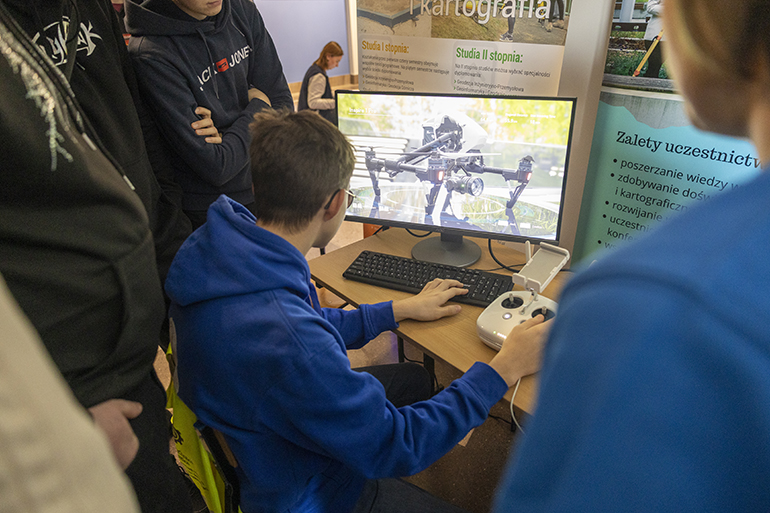
The second day of Treasure Week was focused on drones, geocaching, and at the end there was a lecture on how to store energy.
Drone control workshops were held at the Faculty of Mining, Safety Engineering and Industrial Automation. Participants could try their hand at controlling a small educational drone that can be safely used indoors. Those interested could also test their skills by controlling a larger device on an unmanned aerial vehicle flight simulator. The workshop was organized and conducted by dr Eng. Aleksandra Mierzejowska from the Department of Geoengineering and Resource Exploitation, Faculty of Mining, Safety Engineering and Industrial Automation, Silesian University of Technology. – We are having some fun here, through which we are moving towards science, because we want to familiarize young people with some of the basic principles of flying, but also to make them realize that this technology has a number of applications in many fields of science – said the scientist.
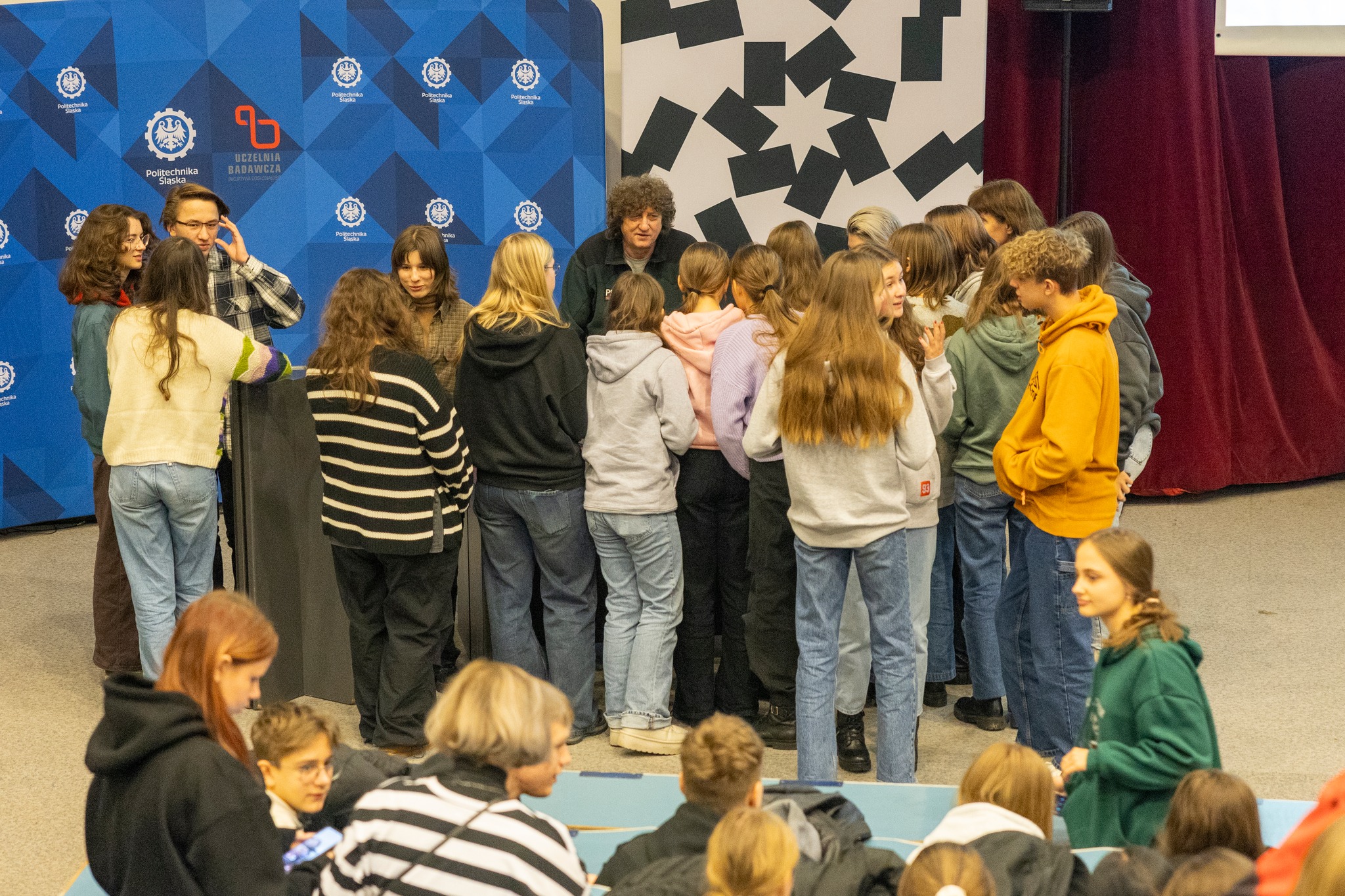
Outdoor game enthusiasts could listen to a lecture on geocaching, EarthCaches and searching for earth's treasures during the lecture entitled "Geocaching - treasure hunting game...". It was led by Paweł Woźniak, an employee of the Upper Silesian Branch of the State Geological Institute in Sosnowiec.
The second day of the Treasure Week ended with a lecture by prof. Marcin Lutyński from the Faculty of Mining, Safety Engineering and Industrial Automation of the Silesian University of Technology, regarding energy storage.
On Wednesday, Treasure Week participants learned how to recognize minerals, how to distinguish a gemstone from a fake, how to take care of health - our greatest treasure, and how to invest in precious metals.
Workshops on identifying minerals and rocks entitled: "Treasures in your hand" was conducted by scientists from the Silesian University of Technology, dr hab. Joanna Komorek and dr Eng. Ewa Strzałkowska. – Such knowledge can be very useful because minerals accompany us in everyday life, such as the salt we have in a saltshaker. After all, it is a mineral - halite - said dr Eng. Ewa Strzałkowska. – Workshop participants learned to recognize minerals based on their physical properties, such as gloss, hardness, cleavage, shape, and form of aggregation. We also used microscopes in the study, which allowed the research to be more detailed - she adds.
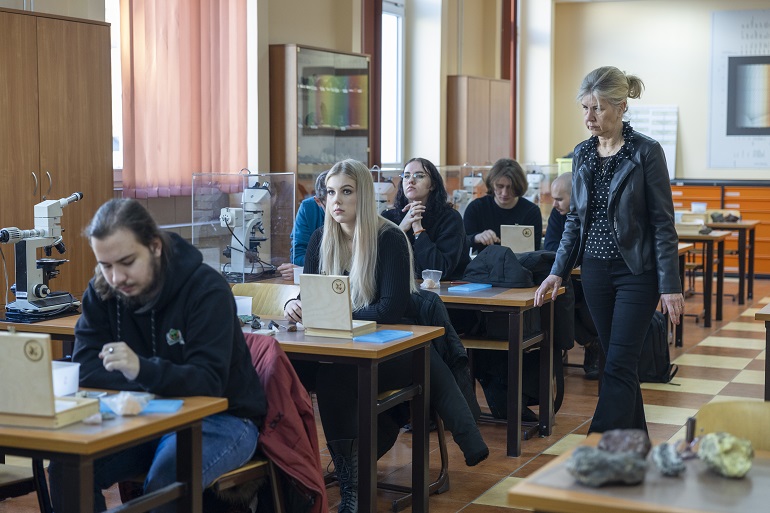
Pupils and students took part in the workshops. Next workshops as part of Treasure Week, titled: "Treasures and fakes" took place at the Institute of Earth Sciences, Faculty of Natural Sciences, University of Silesia. Here, participants had the opportunity to learn about methods of distinguishing natural gemstones from synthetic ones and their imitations.
People interested in investing could take part in workshops titled: "Alternative investments on the example of the precious metals market, analysis and methods of forecasting rates" invited by the University of Economics in Katowice. The series of Wednesday workshops ended with the lecture "Health as a treasure. How to take care of your health - your greatest treasure", which was delivered at the Social Ministry for Loneliness in Katowice by prof. dr med. Jan Duława, head of the Department of Internal Medicine at the Medical University of Silesia in Katowice and head of the Department of Internal and Metabolic Diseases of the Upper Silesian Medical Centre. prof. Leszek Giec, Medical University of Silesia in Katowice.
The fourth day of Treasure Week was marked by exploitation not only underground, but also in space.
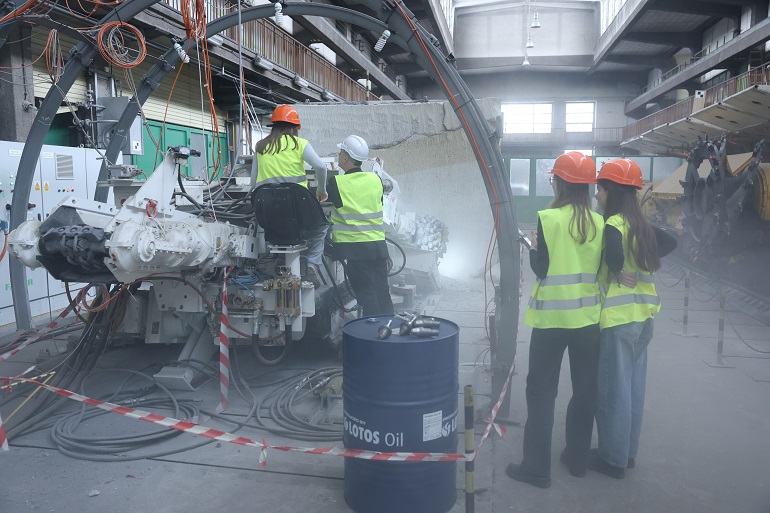
– We divided the presentation into two parts. In the first one, in a specially prepared room, we showed the youth what mineral extraction will look like in the future... in space. Here we presented mining on the Moon. Participants could play the role of space miners, extracting treasures of the Moon using remotely controlled robots - said dr hab. engineer Piotr Cheluszka, prof. SUT
In the second part of the show, visitors to the Faculty of Mining, Safety Engineering and Industrial Automation of the Silesian University of Technology could visit the only Mining Machines Laboratory in Poland, where they can see how mining machines work and even play the role of their operator.
Thursday's activities ended with a meteorite show. Participants learned how much one gram of a meteorite can cost and how old the oldest specimens are. Kazimierz Mazurek, one of the founders of the Polish Meteorite Society, talked about all this in his lecture on meteorites "Unearthly Treasures". One of the "otherworldly treasures" presented by the expert came from the times of the formation of the Solar System, another - Allende - from over four billion years ago. Meteorites from Mars and the Moon also appeared.
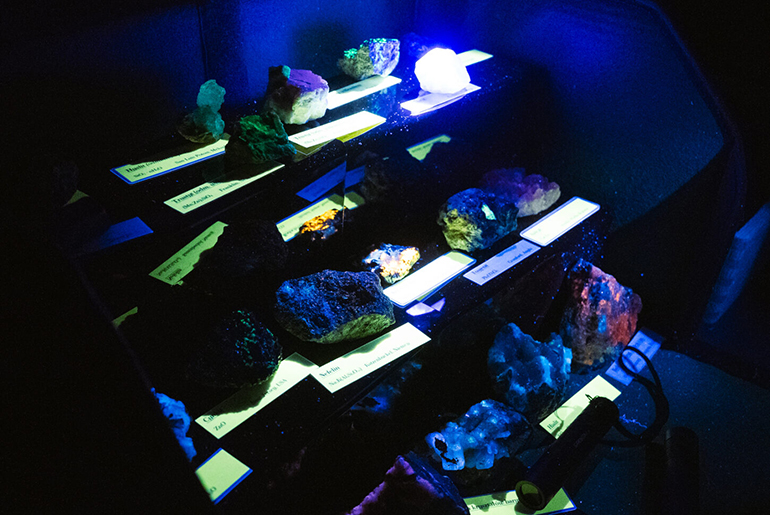
On Friday, as part of Treasure Week, we invited you to a lecture entitled: “How much gold is in your smartphone? – the most valuable and expensive metals” and a display of glowing minerals.
Dr hab. Eng. Magdalena Kokowska-Pawłowska and dr eng. Jacek Nowak - employees of the Department of Applied Geology at the Faculty of Mining, Safety Engineering and Industrial Automation of the Silesian University of Technology presented the most valuable and expensive metals that are necessary to produce, for example, smartphones. Meeting participants learned that more than half of all elements in a mobile device - including its screen, casing, microprocessor, cables, battery, speaker and microphone - could not be created if it were not for the mineral raw materials that are used to produce all these components.
An interesting collection of fluorescent minerals was prepared by students from the Geologists' Scientific Club "Silesian" of the Silesian University of Technology. – Fluorescence is a very interesting phenomenon, invisible to the naked eye, and under the influence of UV light an ordinary grey pebble can turn pink or green – explained Kinga Kwiecień from the "Silesian" group.
– Minerals themselves are interesting, and in my opinion the most fascinating thing is that nature created such wonders – said prof. Małgorzata Labus, scientific supervisor of the club. – Minerals usually do not glow on their own, but some of them can be made to glow using various methods. Students have scientific plans and want to find out what is the factor causing the glow, added the professor.
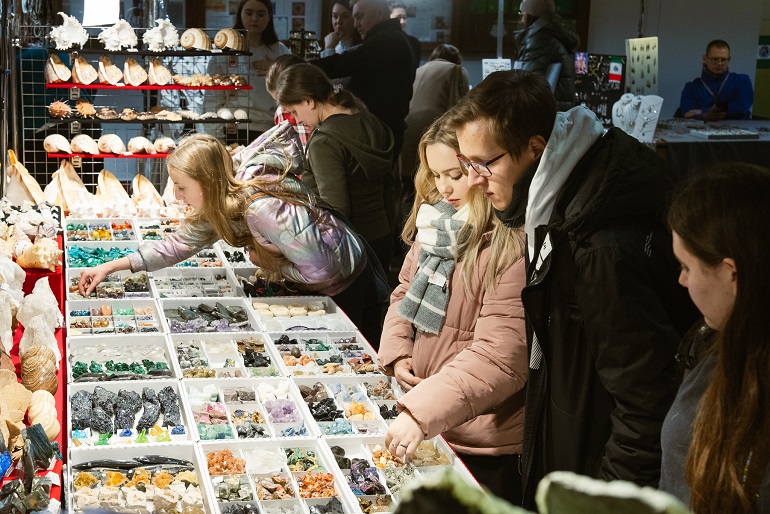
The Treasure Week at the Silesian University of Technology ended with the Exchange of minerals, rocks and fossils, which took place at the Faculty of Mining, Safety Engineering and Industrial Automation of the Silesian University of Technology.
– The exchange of minerals, rocks and fossils has become a permanent part of the tradition of our faculty. The first such event in Silesia was organized at the Silesian University of Technology in 1986. That's almost 40 years of tradition. This year we have over 30 exhibitors presenting all the gifts of the Earth in the form of fossils and minerals. We also have extraterrestrial rocks - meteorites and beautiful, handmade jewellery made of precious stones - said Ewa Głuszek - head of the Museum of Deposit Geology at the Silesian University of Technology.
Every year, the stock exchange attracts crowds of visitors of all ages, from preschoolers to seniors. – Just as we want to show that the European City of Science Katowice 2024 is for everyone, regardless of age, we also show that the exchange is addressed to everyone. Truly, everyone will find something for themselves here, adds Ewa Głuszek.
During the weekend, the Silesian University of Technology also held lectures "Why the stars shine" and "All the stars in the universe", delivered by dr Andrzej Boczarowski from the University of Silesia. In his lectures, or rather popular science performances in the form of multimedia shows, the scientist explained in detail, among others: about the evolution of stars and their classification. He also said that scientists can ensure that the world will not end in the next few billion years.
In turn, the youngest (and not only) could take part in workshops titled: "Minecraft fascinating minerals and rocks in the real world."
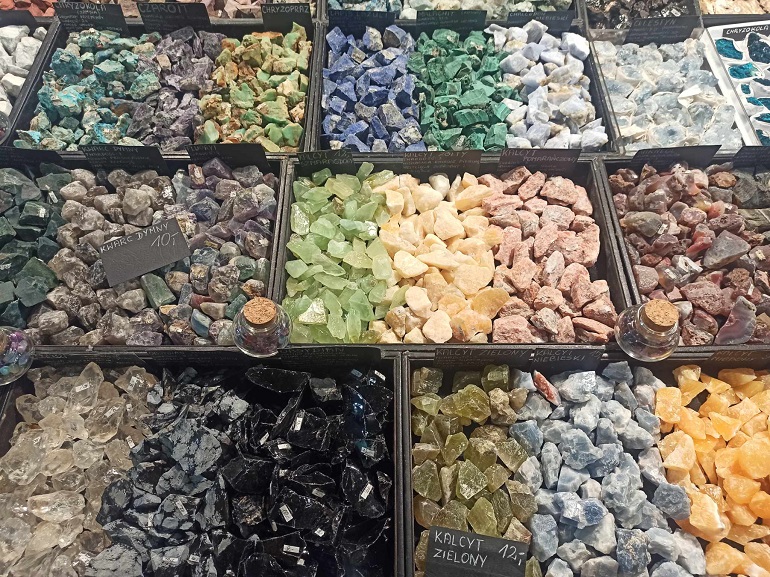
The Treasure Week taking place at the Silesian University of Technology was the second week of learning as part of the European City of Science Katowice 2024. Everyone could find something for themselves in the activities prepared by scientists. Participants will emphasize that it was an opportunity to expand their knowledge, explore new areas, and for the youngest, an impulse to become interested in the fascinating world of science.
The text was prepared by Jolanta Skwaradowska. The events were reported by Anna Świderska, Katarzyna Siwczyk, Martin Huć and Jolanta Skwaradowska.









